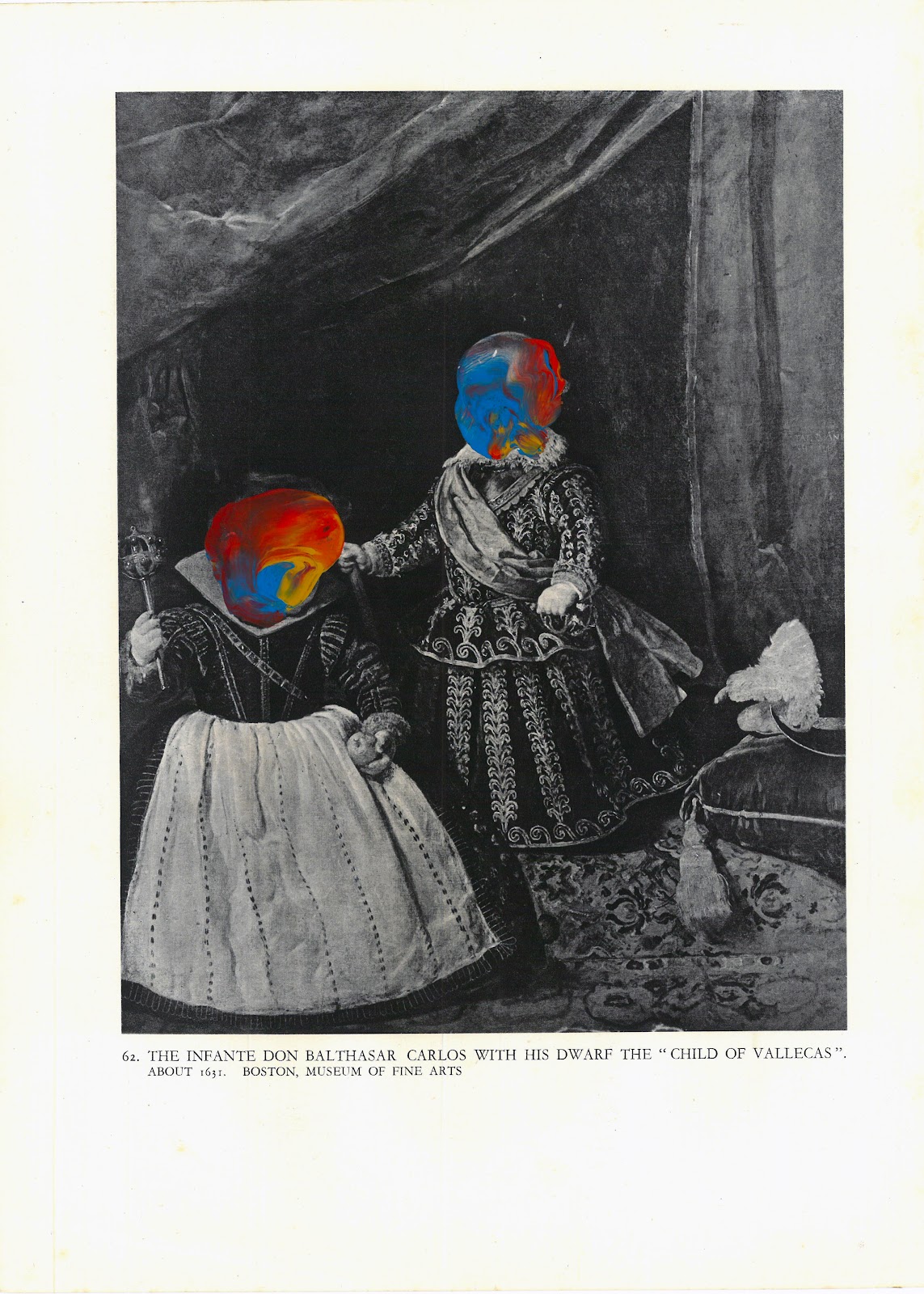Making a nemotechnical exercise through the dense documentation that involves the History of Art and this movement of automatic artists and, always attending the main source of such context through the automatic artist Freddy Flores Knistoff; we see how from the beginning of the practice of Collective Automatic Painting there was a continuity with ideas related to the "Modificationism" as a field of experimentation. This is how Freddy tells us that even before the realization of the countless canvases he realized next to Rik Lina in 1991 at the Kennedylann studio in Amsterdam; he already worked for several years under the aesthetic concepts of the "Modificationism", proof of this, are the same works that he shared in other artistic activities and publications prior to the emergence of the Collective Automatic Paintings, such as the publications of the Anarchist-Surrealist magazine "Droomschaar" (pictures (1), (2)) or the same Freddy exhibitions at Hannover Gallery 13. Wathever the case may be, the experimental opening that occurred in CAPA always operated as a skillful conservator of this artistic trend and that Freddy himself inserted from the beginning in performing what it means today CAPA. On the history of "Modificationism" there is a capital and mandatory text for the understanding of this variant or rather, knowledge of what it was "the last European vanguard" from a historiographical point of view. The thesis in question is that of the researcher and Art Historian Karen Kurczynski, (today associated Professor of Art History at the University of Massachusetts) entitled: "Expressions as Vandalism: Asger Jorn's" Modifications "published in the research magazine of the University of Massachusetts in 2008, "Anthropology and Aesthetics" Volume 53-54 in Association with the Peabody Museum of Archaeology and Ethnology, Harvard University; text that we include integrally below. To recap, the text in question talks about the importance of this "trend" that arose around 1959 under other aesthetic concepts such as that of the "New Disfigurations" in the work of Asger Jorn and soon from other artists such as Enrico Baj and Daniel Spoerri and who drank other artistic solutions contributed by the genius of Marcel Duchamp . However, each artist understood in a different way the hatching of this type of artistic solution but unwittingly opened a new field of experimentation that until today has been maintained as something innate of contemporary artistic production. It is also interesting to note that this type of attitude arose as a protest, a protesting attitude that protested - if you will forgive the repetition- about the alienation of the historical vanguard's by the Parisian Artistic Academy. Therefore, we could say that this protest arose as a new solution to the demands of a context marked by the "robbery and mercantilism" of the historical avant-garde's and what is already popularly accepted as valid. That is why the new "Modification" movement was presented as the last great and genuine movement or "ism" of liberation of Arts.

Welcome to “the Automatic News”. Dedicated to Collective/Collaborative Automatic Painting, research publications, Modification Art, late Surrealism, physical automatism, automatic authors, conceptual revisionism and reflections on Art History curated by the automatic researcher Patricio A. Aragon. Sometimes in Español, English or Deutsch. The painting below: Modification of a "child and dwarf" by Patricio A. Aragon, Dublin, 2018.
Showing posts with label José Estevao. Show all posts
Showing posts with label José Estevao. Show all posts
Friday, January 7, 2022
The avant-garde won’t give up
Subscribe to:
Comments (Atom)
About the Collective Automatic Painting Amsterdam Group (1991-2021)
CAPA (from, Collective Automatic Painting Amsterdam) is an International and Experimental group of artists founded in the 90's by the ch...

-
Übermalte Fotografie, Sín titulo, 1999 En este post no me quiero detener en la biografía de uno de los artistas más importantes con respecto...
-
[ENG] CAPA is pleased to invite you to its new exhibition CAPA Modificaciones that will be available until March 26, 2023 at the CCEM "...
-
Our last exhibition was at the beginning of February 2022 and there are some things that remained anonymous due to the great reception that ...





